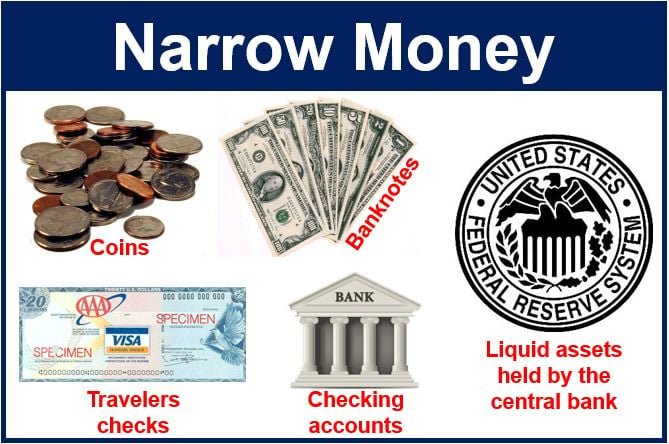Narrow money, also called M1 (in the UK: M0), is a measure of the money supply that includes the most liquid of assets – all coins, banknotes, traveler’s checks, checking account balances, other accounts in credit where the money can be accessed immediately, and all liquid assets held by the central bank.
Narrow money is the most readily available money for doing business and purchasing things.
Time deposits – money deposited in the bank for an agreed period – is not as liquid and instantly available as the components of narrow money. Time deposits are included in what economists call ‘broad money’, which is the sum of narrow money plus time deposits.
 Narrow money is a measurement of the most liquid assets in an economy.
Narrow money is a measurement of the most liquid assets in an economy.
The Bank of England defines narrow money as (approximately) all the cash in circulation. It is a measure of money excluding some less liquid forms of assets, such as deposits at commercial banks, which form part of the broader money aggregates such as M4.
Narrow money – for use in transactions
Narrow money measures aim to gauge the money supply that is actually held for use in transactions. Broad measures also include funds that may be held as a store of wealth.
The problem globally is that there are several variations on these basic types of money measurements. Their exact definitions are periodically revised by countries’ central banks and/or governments.
Central banks, through their open market operations, have direct control of narrow money. The M0 multiplier relationship with other money measurements means this control also gives indirect control of broad money.
